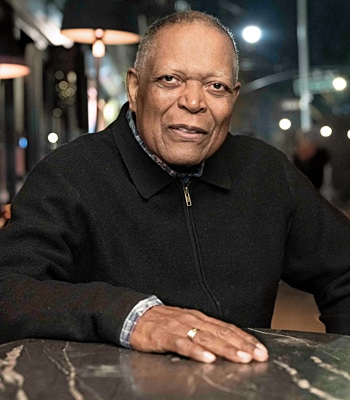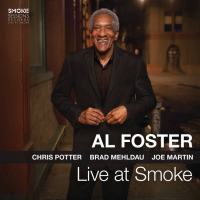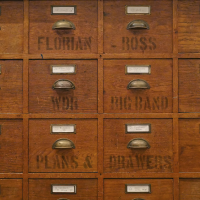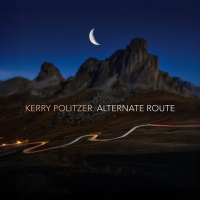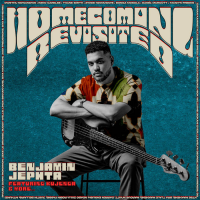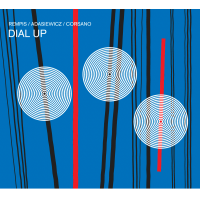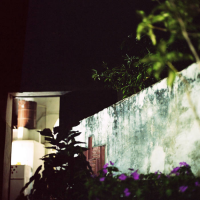Home »
Jazz Articles » Album Review » The Remote Viewers: This Strange Place
The Remote Viewers: This Strange Place
South London group The Remote Viewers first came together as a three-sax unit in 1997 when it comprised
Adrian Northover,
David Petts and Louisa Petts, who all played saxophones, with both Petts playing synths, and Louisa singing. Their first album,
Low Shapes in Dark Heat (Leo Lab, 1998) was studio-recorded by the Petts. Of its twelve tracks, nine were Petts compositions, the others were by
Sun Ra, Armando Sciascia, and Ervin Drake. Subsequent albums included compositions by David Bowie, Portishead, David Sylvian,
Gordon Jenkins and Erik Satie, but it was not long until all tracks were being composed by group members. By 2007 Louisa Petts had left the group, and bassist
John Edwards plus saxophonists Caroline Kraabel and
Sue Lynch had joined. Ever since, the lineup of Northover, David Petts, Edwards, Kraabel and Lynch has been the core of the group, occasionally joined by other players such as drummer Mark Sanders or pianist Rosa Theodora. Edwards, Kraabel, Lynch and Northover are all established improvisers, having been influential members of the London Improvisers Orchestra.
This Strange Place is a first-rate album to mark the group's twentieth album release and its twenty-fifth anniversary. It only features the five core members. None of the ten tracks exceeds the opener's 5'42" and they total just under forty-three minutes. Most of the album's tracks are Petts compositions, the sole exception being the closer, "Lost Again," which he co-wrote with Northover. The album was studio-recorded between January and September 2022. While Northover's main instruments are saxophones, he is also credited with orchestration, mixing and mastering, which probably explains the occasional sounds of drums, percussion or piano in addition to bass and saxophones. Unsurprisingly, Edwards' bass is a solid foundation subtly underpinning each of the tracks. With four saxophone players, it is inevitable that they command attention for the vast majority of the time. Although all four are playing for much of the time, they do not take it in turns to play a series of solos but criss-cross and overlap. They never get in each other's way, perhaps because of the way the pieces were written. Their playing is a pleasure to listen to throughout. Even when all four play together, their contributions fit together like pieces of a jigsaw. All five players sound as if they have been playing together for years and know each other inside out. Altogether
This Strange Place is highly recommended.
Track Listing
The Threat; Ella’s Stare; Substance D; Paper Flowers in Water; Lost, in a Lost Land; Warpaint; After
Midnight; This Strange Place; The Canvas Prison; Lost Again.
Personnel
Additional Instrumentation
Adrian Northover: soprano saxophone; Sue Lynch: clarinet; Caroline Kraabel: alto saxophone.
Album information
Title: This Strange Place
| Year Released: 2023
| Record Label: Self Produced
PREVIOUS / NEXT
Support All About Jazz

All About Jazz has been a pillar of jazz since 1995, championing it as an art form and, more importantly, supporting the musicians who make it. Our enduring commitment has made "AAJ" one of the most culturally important websites of its kind, read by hundreds of thousands of fans, musicians and industry figures every month.
Go Ad Free!
To maintain our platform while developing new means to foster jazz discovery and connectivity, we need your help. You can become a sustaining member for as little as $20 and in return, we'll immediately hide those pesky ads plus provide access to
future articles for a full year. This winning combination vastly improves your AAJ experience and allow us to vigorously build on the pioneering work we first started in 1995. So enjoy an ad-free AAJ experience and help us remain a positive beacon for jazz by
making a donation today.
 All About Jazz has been a pillar of jazz since 1995, championing it as an art form and, more importantly, supporting the musicians who make it. Our enduring commitment has made "AAJ" one of the most culturally important websites of its kind, read by hundreds of thousands of fans, musicians and industry figures every month.
All About Jazz has been a pillar of jazz since 1995, championing it as an art form and, more importantly, supporting the musicians who make it. Our enduring commitment has made "AAJ" one of the most culturally important websites of its kind, read by hundreds of thousands of fans, musicians and industry figures every month.








